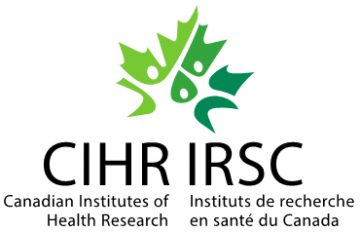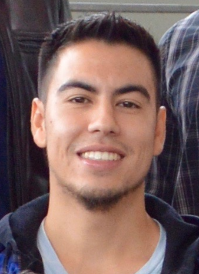 The Kastrup and Kizhakkedathu labs at the Centre for Blood Research (CBR) were awarded funding through the Canadian Institutes of Health Research (CIHR) 2020 Fall round. The project grants aim to support Canadian researchers’ innovative ideas that will advance health-related knowledge, health research, health care, health systems and/or health outcomes.
The Kastrup and Kizhakkedathu labs at the Centre for Blood Research (CBR) were awarded funding through the Canadian Institutes of Health Research (CIHR) 2020 Fall round. The project grants aim to support Canadian researchers’ innovative ideas that will advance health-related knowledge, health research, health care, health systems and/or health outcomes.
From developing a life-saving powder to novel catheter coatings, we were delighted to chat with researchers from both labs to learn more about their respective projects.
Project title: "Minimally-invasive device and bioabsorbable hemostatic powder for managing non-compressible torso hemorrhage"
Amount: $455,176 for 4 years
Nabil Ali-Mohamad (NA), Research Assistant, and Massimo Cau (MC), PhD Student
Tell me about your project.

Massimo Cau

Nabil Ali-Mohamad
NA: With around $450,000 in CIHR funding, we’re developing a new device to help manage a very severe type of internal bleeding called non-compressible hemorrhage, focusing on the torso area. Trauma is responsible for 10% of deaths globally, and it’s estimated that 40% of trauma deaths are caused by hemorrhage.
Military combat personnel like soldiers often suffer from non-compressible torso hemorrhage, and this type of bleeding is especially dangerous: torso bleeds can’t be stopped easily, so surgery is required, but it's very difficult to conduct surgery in pre-hospital environments like a battlefield.
MC: That’s where our technology comes in. It’s a handheld delivery device that sprays CounterFlow, a powder that can effectively deliver medications into wounds to stop bleeding. Ideally, emergency doctors and medics could use this device quickly and easily to stop patients from bleeding out in the field, without the need for additional equipment.
What's the importance of this research?
MC: Currently, the only way to manage torso bleeds is invasive surgery. However, it’s difficult for military personnel to get surgery right after they’re injured, because hospitals and surgeons can be located hours away from the battlefield. Unfortunately, this means that many patients die early on from bleeding before they can receive proper care, such as during transport to a care centre.
What we’re trying to do is intervene between the point of injury and the time of surgery. By stopping severe bleeds, we hope to prolong that “golden hour”, so that more patients survive to get the surgical care that they need. If we can do that, we can bring more people home.
What we’re trying to do is intervene between the point of injury and the time of surgery. By stopping severe bleeds, we hope to prolong that “golden hour”, so that more patients survive to get the surgical care that they need. If we can do that, we can bring more people home.
Can you tell me more about CounterFlow? How will this device work?

Dr. Christian Kastrup / Image Credit: Michael Smith Laboratories.
NA: CounterFlow powder was invented by Dr. Christian Kastrup and his former trainee Dr. James Baylis, and contains tranexamic acid and thrombin – hemostatic drugs that stop bleeding – as well as particles of calcium carbonate. When exposed to blood, the powder produces CO2 bubbles that “propel” the hemostatics deep into wounds to stop bleeding. Its unique formula ensures that the drugs reach the site of injury without being flushed out by blood flow.
In this project we'll be developing a spray device, which will deliver CounterFlow through a thin catheter tube into a patient’s torso wound. Using a catheter is ideal for this type of injury because we can deliver drugs directly to the wound through a very small opening, without worsening the injury or making the wound area larger.
What excites you most about this project?
NA: We’re very excited to be working on this project with colleagues at Vancouver General Hospital, St. Michael’s Hospital in Toronto and the Canadian Department of National Defense, among others. We’re also very keen to hear what our users will have to say about our prototype, and how we might improve it to meet their needs moving forward.
While our focus now is military personnel, we're interested in developing the device for use in rural communities, too, which also face difficulties in quickly reaching hospitals.
MC: Non-compressible torso hemorrhage has been a major unmet need for many years, and there’s a lot of optimism that CounterFlow could be the agent to address this. CounterFlow has been in development for over 7 years with various other applications, and there’s a lot of exciting work to be done to adapt it to this format.

Dr. Jayachandran Kizhakkedathu
Project title: "Novel Infection Resistant Coating in an Era of Drug Resistant Bacteria for the Treatment and Prevention of Medical Device Infection"
Amount: $520,199 for 3 years
Dr. Jayachandran Kizhakkedathu (JK), Principal Investigator
Can you tell me about this project?
JK: Working with UBC collaborators, Principal Investigator Dr. Dirk Lange and Dr. Ben Chew, we will be developing a novel infection-resistant coating for urinary catheters, to prevent and treat catheter-associated urinary tract infections (CAUTI).
Approximately 75% of hospital acquired infections are due to CAUTI. Over 25% of hospital patients are catheterized during their stay, and these inserting these plastic tubes often leads to infection, resulting in extended hospital stays and other health complications.
Currently, antibiotic drugs are the most common way to manage these infections. However, using antibiotics is ineffective for two key reasons: firstly, because bacteria can form colonies called biofilms on catheter surfaces that make it difficult for antibiotics to reach infected tissue; and secondly, because bacteria can develop resistance to antibiotics, making them extremely difficult to kill. Our coating aims to overcome these challenges.
Tell me about this coating. How does it prevent and treat infections?
JK: Our coating is anti-fouling, which means it can repel bacteria and other molecules like proteins, to prevent them from adhering to and forming biofilms on catheter surfaces. While other types of coatings have been developed, such as antimicrobial-based coatings, many can only be applied to specific materials, or become less effective over time because dead bacteria and proteins adhere to the surface and prevent the coating from doing its job effectively.
In preliminary studies, our coating shows promise in preventing biofilm formation from different strains of bacteria for over 90 days, as well as preventing bacterial migration across the catheter surface. It can also be applied to diverse materials, with the potential to be used for other medical devices. There’s still more work to be done, but we’re hopeful that our coating addresses common challenges and provides a simple, long-term technology to prevent and treat catheter-associated infections.
Much of this project draws heavily from past research conducted by PhD Candidate Hossein Yazdani Ahmadabadi and Research Associate Dr. Kai Yu in my lab. Many thanks to them for setting the groundwork!
Much of this project draws heavily from past research conducted by PhD Candidate Hossein Yazdani Ahmadabadi and Research Associate Dr. Kai Yu in my lab. Many thanks to them for setting the groundwork!
What is the future direction of this project?
JK: Ultimately, we aim to create a coating that is substrate-independent, meaning that it can be applied to any material and on any medical device to prevent infection, not just the plastic catheters we’re working on now. We are also working to generate partnership with catheter manufactures and medical device companies towards the translation of this novel technology. In doing so, we could help develop the next generation of infection-resistant medical devices, and prevent patients from suffering from medical device-related infections more broadly.


